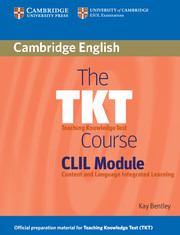Unit 13 - Methods to help learners develop learning strategies
Published online by Cambridge University Press: 27 September 2023
Summary
What are learning strategies?
Learning strategies are the ways learners choose to learn new subject content; for example, memorising or drawing images are common vocabulary learning strategies. Sometimes we can see learners using strategies as they work, e.g. underlining key content vocabulary, but sometimes strategies can't be seen, e.g. making associations between L1 and the target language.
It is known that effective learners are aware of how they learn and think about which learning strategies they use for different tasks. More able learners use a wide range of learning strategies. We need to encourage all learners to use strategies they know in order to improve their learning. We should also help them to try out other strategies so that they have a wider choice and can choose the best strategies to suit them and their learning situation.
Key concepts
Which learning strategies do you use to learn a new subject?
Learning strategies
We can identify learning strategies that learners can use before, during and after doing tasks.
Which strategies will be used before doing tasks?
Key concepts and the CLIL classroom
It is important learners know about many different strategies so they can choose what's best for them. First, we need to find out which learning strategies learners already use. We can then model new learning strategies by telling learners how we work out problems ourselves. Learners need opportunities in class to try out and talk about new strategies and then to think about how effective they were. In this process of choosing, using, reflecting, learners can continue to develop and build on their use of learning strategies for the future.
Another learning strategy is thinking about thinking, or metacognition. Thinking about learning can be divided into five parts:
preparing and planning for learning
selecting and using strategies
monitoring learning
integrating strategies
evaluating learning.
(adapted from Anderson in Griffiths, 2008)
Look at examples of these five parts for developing skills in an art lesson about painting a still life.
- Type
- Chapter
- Information
- The TKT Course CLIL Module , pp. 74 - 78Publisher: Cambridge University PressPrint publication year: 2010



